Immunotherapy Cost-Benefit Calculator
This calculator estimates potential long-term savings from immunotherapy versus traditional allergy medications based on clinical data showing 60-80% symptom reduction.
Estimated Long-Term Savings
Medication Savings:
$0
Total Immunotherapy Cost:
$0
Based on clinical data: 70% average symptom reduction (midpoint of 60-80% range). Immunotherapy costs assume $3,000 upfront plus $300/month for SCIT or $1,500 upfront plus $150/month for SLIT.
When it comes to lasting relief, Immunotherapy is a treatment that gradually desensitizes the immune system to specific allergens has become the go‑to option for many sufferers of seasonal allergic rhinitis.
What is Seasonal Allergic Rhinitis?
Seasonal allergic rhinitis is an inflammatory condition of the nasal passages triggered by airborne pollen, mold spores, or dust mites that flare up at particular times of the year. Common symptoms include sneezing, runny nose, itchy eyes, and congestion. In Brisbane, the pollen peaks in spring and early summer, meaning many residents experience a predictable pattern of misery.
The underlying cause is an over‑reaction of IgE antibodies that bind to allergens and signal immune cells to release histamine. Over time, repeated exposure can lead to chronic inflammation and even asthma development.
How Immunotherapy Works
Immunotherapy, often called “allergy shots,” involves injecting tiny, gradually increasing amounts of the specific allergen extract into the patient’s skin. This process is known as Subcutaneous immunotherapy (SCIT) and aims to retrain the immune system to tolerate the allergen rather than overreact. A newer oral version, Sublingual immunotherapy (SLIT), places a tablet or drops under the tongue, offering a needle‑free alternative.
During the buildup phase, the dose is increased weekly or bi‑weekly until a maintenance level is reached. Maintenance injections are then given once a month for three to five years. Research shows that after the maintenance phase, many patients remain symptom‑free for many years even after stopping treatment.
Key Benefits of Immunotherapy for Long‑Term Relief
- Durable Symptom Reduction: Clinical trials report a 60‑80% decrease in symptom scores after three years of therapy.
- Lower Need for Medications: Patients often cut back on antihistamines, nasal corticosteroids, and decongestants, reducing drug‑related side effects.
- Disease‑Modifying Effect: Immunotherapy can prevent the onset of new allergies and lower the risk of developing asthma.
- Improved Quality of Life: Studies using the Allergy Symptom Score (ASS) and QoL questionnaires show significant gains in daily activity and sleep quality.
- Cost‑Effectiveness: Though upfront costs are higher, long‑term savings from fewer doctor visits and less medication often offset the initial expense.
Those benefits make immunotherapy a compelling long‑term strategy compared with short‑term pharmacologic relief.
Who Is a Good Candidate?
Ideal candidates are adults and children who experience moderate to severe seasonal allergic rhinitis despite optimal use of medication. Before starting, an allergist will usually perform an Allergy skin test or a specific‑IgE blood test to pinpoint the exact pollen or mold causing the reaction. Patients with uncontrolled asthma, severe cardiovascular disease, or certain immune disorders may need alternative approaches.
Children as young as five can begin SLIT, while SCIT is generally recommended for those over ten, due to the need for consistent clinic visits.
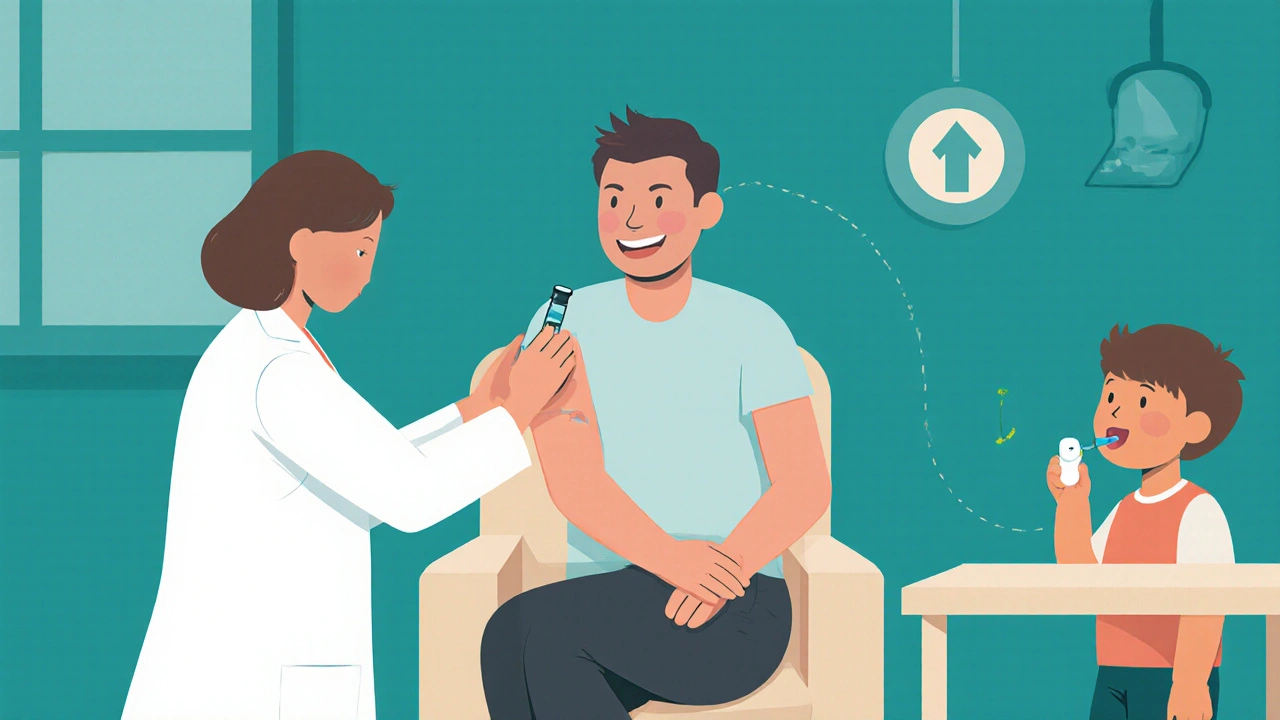
Potential Risks and How to Manage Them
Because immunotherapy deliberately provokes an immune response, local reactions at the injection site (redness, swelling) are common but mild. Systemic reactions, such as hives or anaphylaxis, are rare (~0.1% of injections) and can be managed by observing the patient for 30 minutes after each dose.
Choosing a reputable clinic, adhering to the prescribed schedule, and carrying an epinephrine auto‑injector (if advised) are essential safety steps.
Immunotherapy vs. Traditional Medications
| Aspect | Immunotherapy (SCIT/SLIT) | Antihistamines | Nasal Corticosteroids |
|---|---|---|---|
| Onset of Relief | Weeks‑to‑months (build‑up phase) | Minutes to hours | Days |
| Duration of Effect | Years after treatment ends | Only while taken | Only while taken |
| Impact on New Allergies | Reduces risk | No effect | No effect |
| Side‑Effect Profile | Local swelling, rare systemic reactions | Dry mouth, sedation | Nasally dry, occasional nosebleeds |
| Cost (5‑year horizon) | Medium‑high upfront, lower long‑term | Low per month, cumulative high | Low per month, cumulative high |
The table illustrates why many people turn to immunotherapy when they want a solution that lasts beyond the allergy season.
Practical Steps to Start Immunotherapy
- Schedule a consultation with a board‑certified allergist.
- Undergo diagnostic testing (skin prick or specific IgE blood test).
- Review the identified allergens and discuss SCIT versus SLIT options.
- Begin the buildup phase under clinical supervision.
- Transition to maintenance injections and adhere to the monthly schedule.
- Re‑evaluate after 3‑5 years to decide whether to continue or discontinue.
Sticking to the schedule is crucial; missing multiple doses can reset the desensitization process.

Real‑World Success Stories
Emma, a 34‑year‑old Brisbane teacher, suffered from year‑round hay fever that forced her to miss classes each spring. After three years of SCIT, she reports near‑zero symptoms and has stopped using daily antihistamines.
James, a 12‑year‑old with both pollen allergy and mild asthma, started SLIT at age eight. By age 13, his asthma attacks dropped by 70%, and his school attendance improved dramatically.
Frequently Asked Questions
How long does a typical immunotherapy course last?
Most protocols run for three to five years, with a buildup phase of 12‑24 weeks followed by monthly maintenance injections.
Is immunotherapy safe for children?
Yes. Sublingual tablets are approved for children as young as five. For injections, most allergists start at age ten to ensure reliable clinic attendance.
Can I combine immunotherapy with my current allergy meds?
During the buildup phase, doctors often keep antihistamines or nasal steroids on board to manage breakthrough symptoms. Once the maintenance dose is reached, many patients can taper off medications.
What are the most common side effects?
Mild redness or swelling at the injection site is typical. Systemic reactions, like hives or wheezing, are rare but require immediate medical attention.
Do I need to continue treatment forever?
Most guidelines suggest a minimum of three years. Many patients experience lasting relief for a decade or more after stopping, but some choose to continue if symptoms return.
Bottom Line
For anyone fed up with reaching for the same over‑the‑counter pills every spring, immunotherapy offers a chance to reset the immune system, cut down on daily meds, and enjoy seasons without constant sneezing. While it requires commitment and an initial investment, the long‑term payoff-both health‑wise and financially-makes it a standout option for durable seasonal allergy relief.

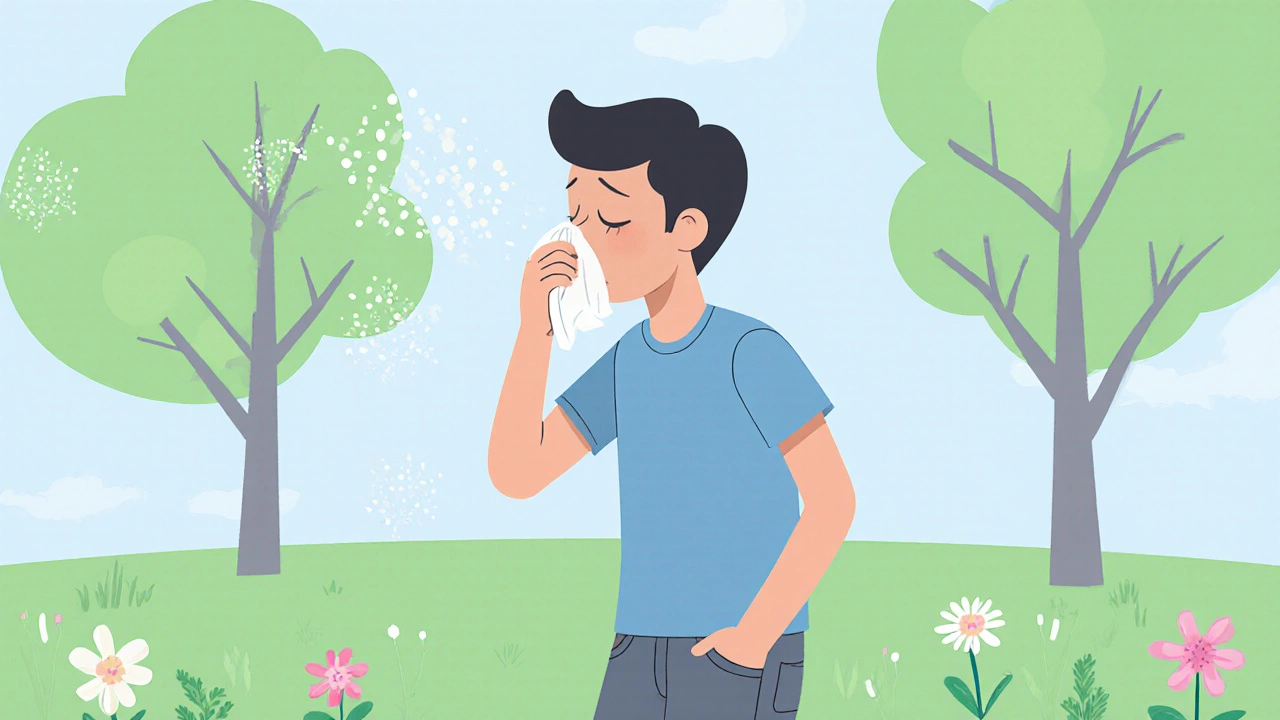
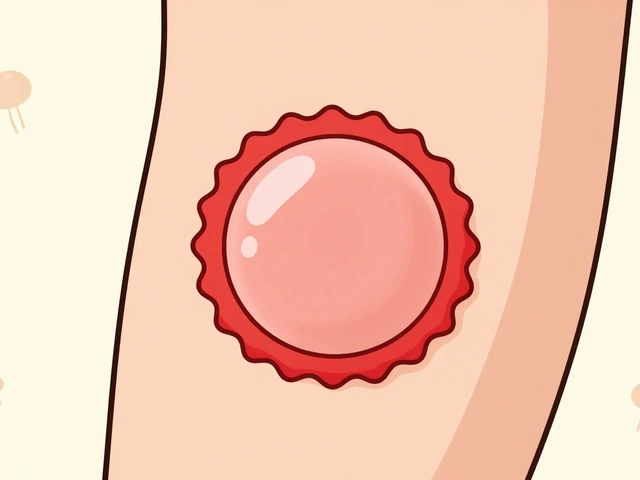
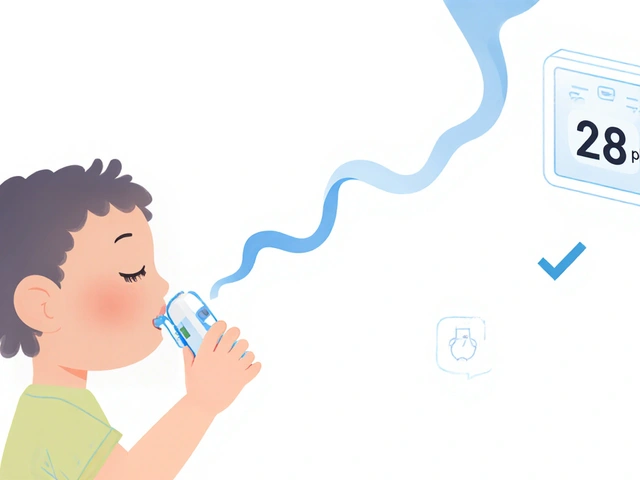

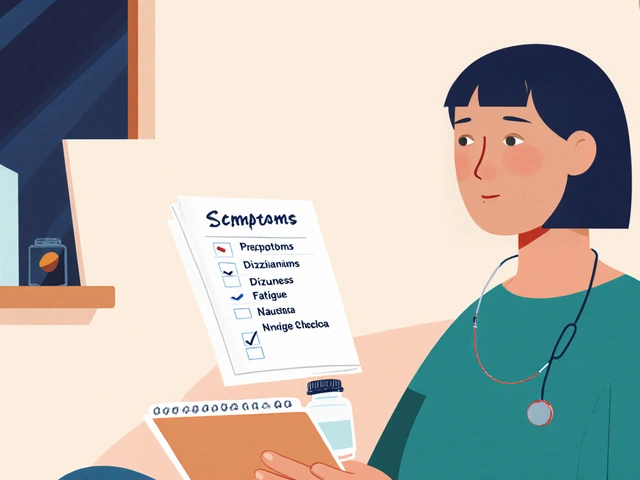

Vivian Annastasia
October 21, 2025 AT 18:01Oh great, another miracle cure that promises to “reset” your immune system while silently demanding a five‑year commitment. Because who doesn’t love getting poked every month, right? The fact that you actually have to stick to a schedule for years is just the cherry on top of this “convenient” solution. Sure, the stats look shiny, but the real world includes missed appointments, insurance hoops, and the occasional fainting spell at the clinic. If you’re okay with swapping a cheap daily antihistamine for a pricey, long‑term hobby, immunotherapy might be your jam.
John Price
October 21, 2025 AT 18:10Sounds like a lot of hassle for a few weeks of relief.
Erika Thonn
October 21, 2025 AT 18:18Life, in its relentless cycle, mirrors the allergic response – an over‑reaction to a harmless whisper of pollen, yet we persist in battling the unseen. Immunotherpay, in a strange twist, teaches the body that the whisper can be a friend, not a foe. It's as if our immune system learns to dance with the very thing it once despised, a paradox that would make the ancient sages chuckle. The journey, though, is a marathon of patience, not the sprint we crave in a hyper‑instant world. Perhaps the true cure is not the injection, but the humility to accept that not every storm can be outrun.
Ericka Suarez
October 21, 2025 AT 18:43Listen up, folks! This so‑called “immunotherapy” is the hero we need, the shield against the pollen apocalypse that drags us through endless sneezes and watery eyes. No more hiding under a blanket of meds – we’re talking real, lasting freedom! Imagine walking through spring without that constant tickle in your nose, feeling like a true American conquering nature’s worst tyranny. The science is solid, the results speak louder than any slogan, and the only thing we have to lose is our dependence on those tiny pill bottles. If you’re not on board, you’re basically choosing to stay a victim of the season’s cruel whims.
Eli Soler Caralt
October 21, 2025 AT 18:53Wow, the drama is real! 😂 I get the vibe – like turning a pesky pollen monster into a buddy you can actually chill with. Sure, the process is a bit of a grind, but think of the payoff: no more constant sniffles, no more “I’m allergic to life” vibes 🌼💪. Plus, once you’ve survived the build‑up, you’ll be basically a pollen‑proof superhero. (Slightly misspelling things just to keep it real, you know?)
Chirag Muthoo
October 21, 2025 AT 19:16I wish to convey my sincere commendation to those contemplating immunotherapy. The evidence presented substantiates its efficacy and highlights a favorable safety profile when administered under professional supervision. It is prudent to adhere strictly to the prescribed regimen, ensuring optimal desensitisation while mitigating adverse events. Moreover, ongoing evaluation by a qualified allergist will ascertain continued benefit and determine the appropriate duration of therapy. In sum, this modality represents a commendable avenue for sustained allergenic relief.
Angela Koulouris
October 21, 2025 AT 19:26You've got this! Think of immunotherapy as a marathon, not a sprint – each session is a bright brushstroke painting a clearer, fresher sky for your sinuses. Keep your schedule tight, stay positive, and watch the sneezes fade like a sunrise behind the clouds.
Harry Bhullar
October 21, 2025 AT 19:50Immunotherapy, often branded as the “allergy shot” or “sublingual tablet,” fundamentally operates by introducing minuscule, incrementally increasing quantities of the offending allergen to the immune system, thereby coaxing it into a state of tolerance rather than perpetual alarm. The initial build‑up phase, typically spanning several months, involves weekly or bi‑weekly administrations that are carefully calibrated to avoid triggering severe systemic reactions while still providing a meaningful stimulus. Once the target maintenance dose is achieved, patients transition to a maintenance schedule, most commonly a single injection or tablet per month, which can extend for three to five years depending on individual response and allergen specificity. Numerous double‑blind, placebo‑controlled trials have demonstrated a reduction in symptom scores ranging from sixty to eighty percent, underscoring the clinical potency of this approach. Beyond mere symptom attenuation, immunotherapy has been shown to alter the underlying immunologic cascade: IgE levels decline, while IgG4 “blocking” antibodies rise, effectively intercepting the allergen before it can provoke mast cell degranulation. This immunomodulatory effect translates into a lower likelihood of developing new sensitivities, a phenomenon especially pertinent for pediatric patients whose immune systems are still maturing. From an economic standpoint, while the upfront costs of clinic visits, extracts, and monitoring may appear steep, longitudinal analyses reveal a net saving through reduced medication usage, fewer physician encounters, and diminished work‑loss days. Safety considerations, though paramount, are generally manageable; local injection site reactions are commonplace and self‑limiting, whereas systemic anaphylaxis remains exceedingly rare, occurring in roughly one per thousand injections. Therefore, adherence to post‑administration observation protocols-typically thirty minutes-serves as a critical safeguard against these infrequent but serious events. It is also advisable for patients on beta‑blockers or with uncontrolled asthma to undergo thorough pre‑treatment evaluation, as these comorbidities can amplify reaction severity. Moreover, the convenience of sublingual immunotherapy (SLIT) offers a needle‑free alternative, enhancing accessibility for those with needle phobia or limited clinic access. In practice, clinicians often continue concomitant antihistamines or intranasal steroids during the build‑up phase to smooth breakthrough symptoms, tapering these agents as tolerance solidifies. Patient education plays an indispensable role; understanding the commitment required, the expected timeline, and the potential for transient discomfort can bolster compliance and ultimately improve outcomes. In sum, immunotherapy stands as a disease‑modifying strategy that transcends symptomatic relief, offering a durable, holistic solution to the perennial burden of seasonal allergic rhinitis.
Dana Yonce
October 21, 2025 AT 20:00👍 Totally love the idea of ditching daily pills – these shots sound like a game‑changer! 🌸🙌
Lolita Gaela
October 21, 2025 AT 20:23From a pathophysiological perspective, subcutaneous immunotherapy induces a shift from a Th2‑dominant cytokine milieu toward a regulatory T‑cell (Treg) phenotype, subsequently augmenting IL‑10 and TGF‑β production which suppresses eosinophilic infiltration. This immunologic reprogramming attenuates mast cell degranulation thresholds, resulting in a clinically appreciable decrement in allergen‑specific IgE-mediated hyperreactivity. Concurrently, the upregulation of allergen‑specific IgG4 serves as a “blocking antibody,” competitively inhibiting allergen binding to FcεRI receptors. Such mechanistic insights substantiate the observed long‑term remission rates post‑therapy cessation, corroborating the disease‑modifying potential of allergen‑specific immunotherapy.
Giusto Madison
October 21, 2025 AT 20:33Look, if you’re not willing to stick to a monthly schedule for years, you’re just choosing to stay miserable – no more excuses.
erica fenty
October 21, 2025 AT 20:56Immunotherapy - proven, cost‑effective, long‑term relief, reduced IgE, increased IgG4, lower asthma risk, better QoL.
Xavier Lusky
October 21, 2025 AT 21:06What they don’t tell you is that the pharmaceutical lobby funds most of the “research,” steering patients toward endless medication cycles while keeping the true, natural desensitization methods off the mainstream.